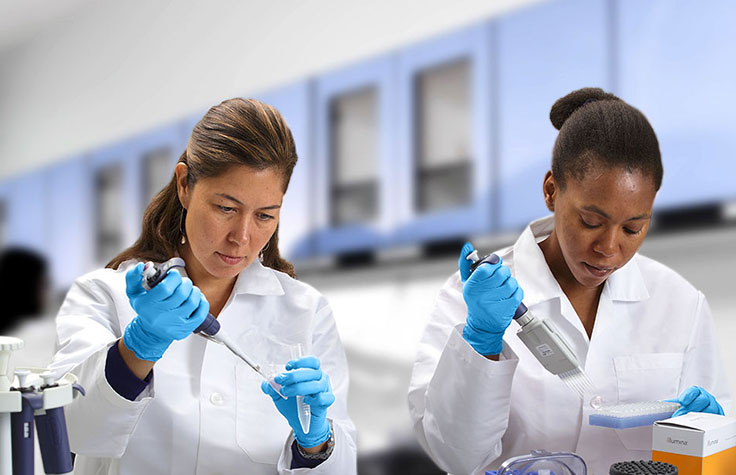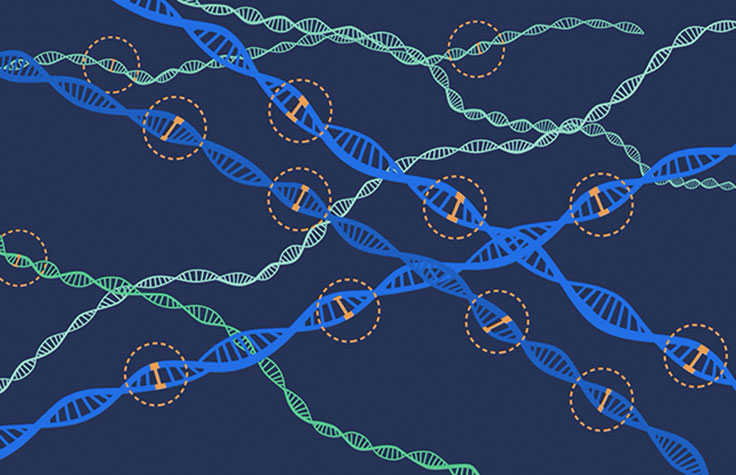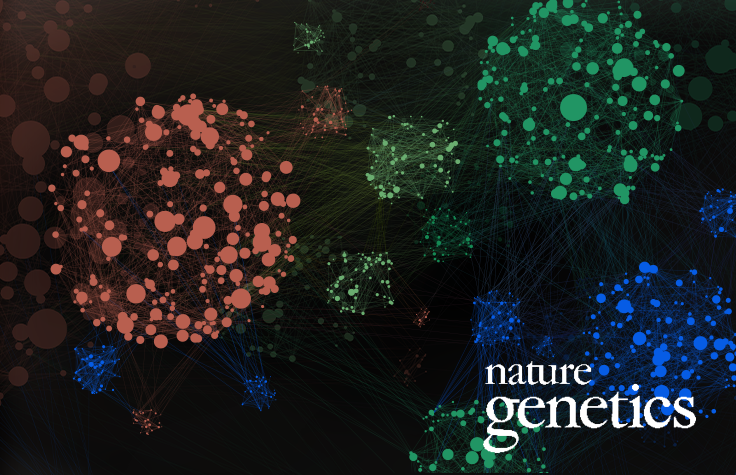Genome-Wide Association Studies

What is a GWAS?
Genome-wide association studies (GWAS) use high-throughput genomic technologies to scan entire genomes of large numbers of subjects quickly, in order to find genetic variants correlated with a trait or disease. Understanding the genetic architecture of complex diseases relies heavily on discovery and characterization of disease-associated variants such as single nucleotide polymorphisms (SNPs) and copy number variations (CNVs).

GWAS for Common Variant Discovery
Complex diseases are often characterized by common variants, while the contribution of rare or low-frequency variants remains largely unknown. Large-scale GWAS using microarrays are efficient and cost-effective for identifying loci and imputing common SNP variants associated with disease. However, arrays are limited in detecting low-frequency SNP variants. The base-by-base resolution of whole-genome sequencing allows for the identification of both common and rare variants that may be associated with disease.

Benefits of Genome-Wide Association Studies
- Identification of novel variant-trait associations, with more than 50,000 trait- and disease-associations reported to date1
- Genotype information that can be leveraged for clinical applications, including development of polygenic risk scores used for early detection, prevention, or treatment of disease as well as drug development, selection, and dosage
- Generation of easily sharable data, facilitating analysis on increasingly large and diverse sample sets
Opportunities for GWAS and Genetic Disease
GWAS for many diseases and disorders have not yet been performed, and the large majority (79%) of participants in GWAS to date are of European ancestry. As the European population accounts for just ~16% of the global population, there is a recognized need for more diverse GWAS datasets.2
In addition to ethnic diversity, there is a need to perform GWAS on diverse disease indications for specific sub-groups. This will help provide clues about which genes and gene pathways could be involved in disease mechanisms and pathogenesis.
Successfully Identified Variants for Specific Complex Diseases
GWAS with the commonly used case-control setup approach, which compares two large groups of individuals–one case group affected by a disease and one healthy control group–have successfully identified variants for specific complex diseases, such as:
- Type 2 diabetes
- Parkinson’s disease
- Crohn’s disease
- Various types of heart disease including coronary artery, atrial fibrillation, cardiomyopathy, etc.
- Multiple types of cancer including breast, colorectal, etc.
Understanding Variant to Function Research

Variant to function (V2F) research focuses on mapping genetic variants to disease, in order to discover new biomarkers, learn how these variants affect cellular processes, and make breakthroughs that will change how we treat complex diseases. Watch this video to learn more about V2F research, or share your research and engage with other V2F researchers using the hashtag #V2FNow.

Using GWAS to Map Complex Genetic Traits
Researchers perform large GWAS studies to identify disease-associated DNA risk loci and develop polygenic risk scores.

From GWAS to NGS: Genetics of Children's Complex Diseases
Professors at Children's Hospital of Philadelphia discuss how they use NGS to map variants to causal genes.
Featured GWAS Products
Prioritizing Functional Genetic Variants Through Advanced Sequencing Approaches
Genome-wide association studies have identified thousands of variants with putative roles in different diseases. However, going from statistical associations to true insight into disease mechanisms remains a challenge. Recent advances in sequencing technologies have facilitated the development of strategies for assaying GWAS SNPs for potential functional relevance.

Related Methods
Whole-Genome Sequencing
Obtain a high-resolution view of the entire genome.
Microarrays
Analyze genetic variation on any scale, for a broad range of applications.
SNP Genotyping
Efficiently detect single nucleotide polymorphisms and variants using microarrays and sequencing.
Additional Resources
NGS for Beginners
Find resources designed to educate on the basics of next-generation sequencing.
Genomics Research Hub
Explore the latest genomics discoveries and data analysis innovations by Illumina scientists.
Illumina Resources and Tools
Find everything you need to get started, from training to experiment planning, purchasing, and more.
References
- Tam V, Patel N, Turcotte M, et al. Benefits and limitations of genome-wide association studies. Nat Reviews. 2019;20:467-484.
- Martin, A.R.. et al. Clinical use of current polygenic risk scores may exacerbate health disparities. Nature Genetics. 2019; 51: 584-591

